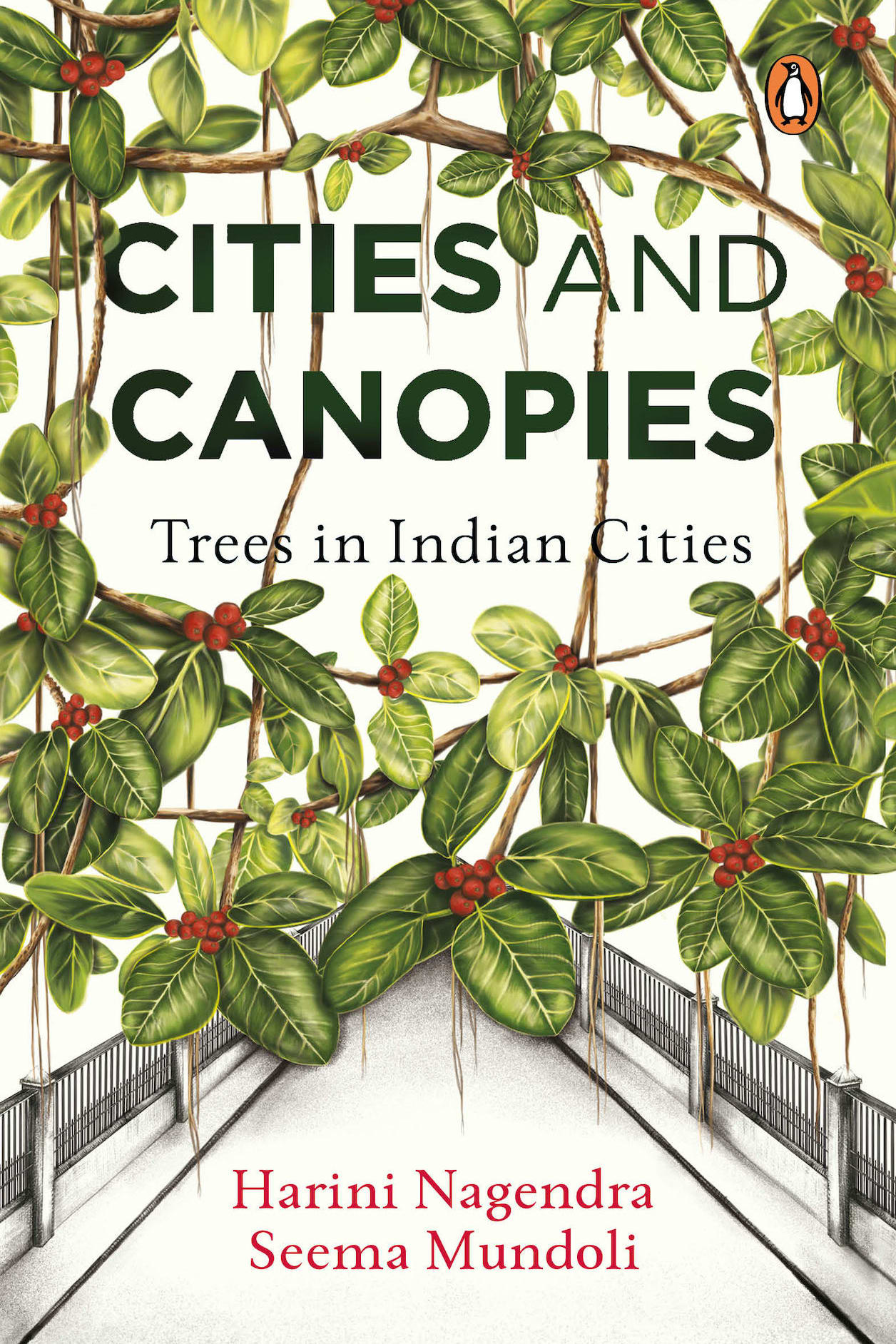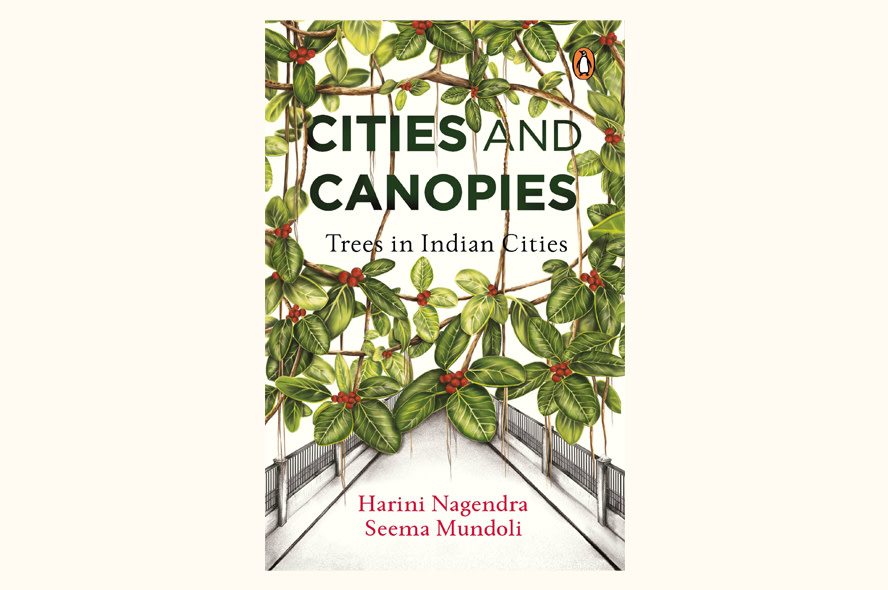 Listen to this article
•
15:34 min
Listen to this article
•
15:34 min
Since ancient times, cities have been founded after destroying forests and trees, as told to us in myths, legends and historical narratives. The Khandava forest in the Mahabharata was burnt down by Arjuna and Krishna to establish the city of Indraprastha (believed to be modern-day New Delhi). The medieval town of Bengaluru was built by clearing out a jungle. Alongside this destruction of forests, new urban settlers planted and nurtured trees in and around cities. Groves of fruit-bearing trees seemed to have covered the landscape in different parts of the country, used as sites for the collection of fruit, as well as for community gathering.
Ashoka, the Mauryan emperor, planted mango orchards with wells throughout his kingdom to ensure shade and water for travellers in the third century BC. Mughal rulers Babur, who ruled in the sixteenth century CE, and Dara Shikoh, who came in the seventeenth century CE, were both mango lovers. Their memoirs describe orchards of some of the finest mango trees planted around towns and cities. So favoured was this fruit that Mughal noblemen who raised mango orchards were granted tax waivers. This tradition of planting fruit groves continued into colonial times as well. A number of British gazetteers from the early 1900s mention groves across north India. In Agra, 4 per cent of the land area was covered by groves of mango, jamun, bael and other indigenous fruit. In Jhansi, the tamarind was a favourite tree of the ruling Maratha kings. It was planted widely, encouraged by rent-free grants of land. Lucknow had groves of mango and orchards of ber, covering 22,059 acres in the district in 1866, while Kanpur had several thousand acres covered by mango and mahua. The main civil station of Ganjam (present-day Srikakulam in Andhra Pradesh) was ‘well studded with mango and tamarind topes’ (topes means orchards), while the town of Ellore (today’s Eluru) had extensive groves of toddy. Across the Deccan and the southern peninsula, groves of mango, neem, banyan and tamarind were in abundance.
Groves gave their name to many towns. The town of Hazaribagh (the garden of a thousand trees) in Bihar, got its name from a massive mango grove with thousands of trees. The grove was so large that it is said to have provided a camping ground for troops travelling between Kolkata and Varanasi. Similarly, the city of Ambala near Chandigarh derives its name from Ambwala (land of mangoes), in tribute to its numerous mango groves. The names of localities in many cities also give us an indication of the groves that once stood there. In Chennai, we have Pelathope (jackfruit orchard), Mambalam (mango fruit), Vepery (neem), Teynampet (coconut), Panayur (palm village), Alandur (banyan), and Illuppaithoppu (mahua orchard), for instance. In Bengaluru, we have Halasur (jackfruit orchard) and Gundathope (gunda thope being the local name for a wooded grove). Mumbai too was covered with groves of different species. Phanaswadi derives its name from a jackfruit orchard that once flourished there, Vadala from a banyan grove and Madmala or Manmala (today’s crowded Mahim), from the orchard of coconuts. Do we even know how many localities in the towns and cities we live in today are named after such groves? Groves were built and maintained by local residents, who received tax relief. William Sleeman, a British officer, in his memoir Rambles and Recollections of an Indian Official, wrote about groves in Jabalpore (now Jabalpur) in 1828. He said that land was provided rent-free to locals on the condition that the person would plant and care for twenty-five trees per acre. They were meant for more than providing fruit, however. The owner was also expected to build and maintain a well to water the trees, and to provide drinking water to travellers. The same officer describes a fascinating story of a Hindu couple, Berjore Sing and his wife (sadly unnamed), who owned a mango grove. According to local custom, they could not taste the fruit from the grove unless they married one of the trees, or the grove itself, to a nearby tree (normally a tamarind). The poor couple spent so much on planting and maintaining their grove and wells that they could not conduct the wedding for years, since they never had enough money. But fearing that they would die without tasting the mangoes from their orchard, which their children had eaten and spoke highly of, Sing and his wife sold their gold and silver ornaments, even borrowing money to hold the marriage. Around 150 Brahmin guests were invited to the feast. In the meantime, the only tamarind in their grove had died. Sing married the tree to a jasmine vine he had planted next to the mango tree that had been chosen as the bridegroom for the occasion. In the next fruiting season, in June 1834, Sing and his wife tasted the fruit from their trees, satisfied at last, happy that they were able to do so before they left this world.
This touching story gives us a glimpse into how deeply these groves were interwoven into the lives of their owners, being much more than mere sources of income. One of India’s earliest naturalists E.H. Aitken, writing about mango groves, asks, ‘Where would the dusty wayfarer stop to eat his midday chuppattee (flat bread made of wheat flour) and drink a draught of cold water, or where would the collector pitch his tent?’ In Mysuru, Hyder Ali is believed to have encouraged the development of gunda thopes across the region. This practice was continued by the Mysore government during the colonial period. The Mysore Gazetteer counts 2118 gunda thopes in 1894, spread across Bengaluru (then Bangalore) district, containing mango, jamun, mahua, jackfruit, tamarind and different species of ficus. Travelling along the periphery of the city, the remnants of these groves can be seen even today. Wood from trees in the groves (preferably from mango trees) was used for construction or renovation of temples, and for building doors and windows of homes. The poor, who had no land or trees of their own, were permitted to cut branches to use during weddings and cremations. Community meetings and festival feasts were held under the shade of the trees. Fruits of the mango and tamarind were shared among the families and auctioned to fund village development. Cows, goats and sheep were brought to the thopes to escape the heat of the midday sun, after being washed and given water in lakes nearby. While the grazers dozed or meditatively stared into space, the animals nibbled on the undergrowth protected by the shade of the trees. The thopes also offered temporary residence to nomadic communities, wandering mendicants and astrologers. The trees themselves were once believed to be the abode of gods and climbing them was forbidden. Some thopes had small shrines and stones at the base of trees, dedicated to local deities. In some of the remnant groves, grazing still persists and time seems to stand still, except when the honk of a passing vehicle brings us back to the present. But even today at dusk, the sound of vehicles is drowned by the cacophony of birds that come to the thopes to roost for the night, amidst the fruit bats that can be seen flitting around the trees.
Groves around towns in north India, situated along the banks of the Ganga, had other uses. They provided cover for Indian sepoys and British troops during the famous 1857 revolts against colonial rule. We can get a glimpse of the beauty of these groves that seem to have dotted the landscape from the memoirs of James Forbes who came to India as a writer for the East India Company and spent nearly two decades here. Forbes travelled extensively, especially in northern India, and mentioned the many groves he saw in Oriental Memoirs, published in 1834. Describing the province of Gujarat, he said that ‘the number of trees which adorn the roads, the richness of the mango thopes around the villages, the size and verdure of the tamarind trees, clothe the country with uncommon beauty, such indeed as I never saw to so great an extent in any other part of the globe’.
Where are these urban groves and orchards that once covered hundreds of acres? They have been lost over the years as cities grew. We can still find some remnants in some cities, but these are increasingly in danger of being lost, cut down to make way for roads and buildings. Few of Bengaluru’s groves exist today. Many have been degraded, with hardly any trees, while others have been turned into dumping sites, or converted to schools, roads, bus stops, community centres or houses. Some have been converted into parks, landscaped and beautified so much so that the original grove is unrecognizable. The trails where once cattle trod have been replaced by paved paths. What is saddest is the fading of the groves from the collective memory of the community. A once-vibrant urban ecosystem central to daily living is being reduced to an overgrown patch of land devoid of trees. As the city expands, more and more of these gunda thopes will be lost.
Excerpted with permission from Cities and Canopies by Harini Nagendra and Seema Mundoli, published by Penguin India, 2018. Pages: 256. Price: Rs 499.






